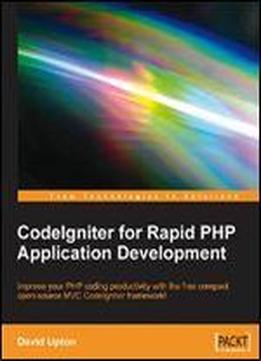

Both can probably be done, but neither is the best use of your time. It’s like trying to write a sales brochure using Excel, or do cash-flow projections using Word. If you agree with the presuppositions of the developers who built a given framework, it makes your job easier. In Chapter 1, Upton defines some basic tenets which constitute a framework. Shunning the dark ways of sloppy coding, David Upton guides you along the path of PHP enlightenment throughout this book. Though comfortable with PHP, I have heard enough horror stories about it (some even true) to know that I should adhere to best practices when writing interpreted code for the server.

Experienced PHP gurus who are looking for a way to enhance their workflow would also find this book useful. This book would be a great resource for front-end developers who are familiar with PHP templates, and want to take their skills to the next level by applying MVC best practices. Eschewing complexity, it strives for excellence with a small foot/files/includes/print.css. Weighing in at 240 pages, it is a concise guide to CI, in keeping with the same no-nonsense philosophy as the framework. This is where the latest book by David Upton comes in: CodeIgniter for Rapid PHP Application Development, published by Packt Publishing. CI is an abstraction of the code that drives EE.ĬI’s core download is bundled with a User Guide, but it is always helpful to have real world, hands-on examples. One such PHP framework is CodeIgniter, an open-source project by EllisLab, the company behind the popular CMS ExpressionEngine. Their popularity stems from the notion of “convention over configuration,” automating mundane tasks so you can focus on more unique and exciting aspects of a project. Share your comments on this topic with other web professionalsįrameworks have become a hot topic in the world of web development.


 0 kommentar(er)
0 kommentar(er)
